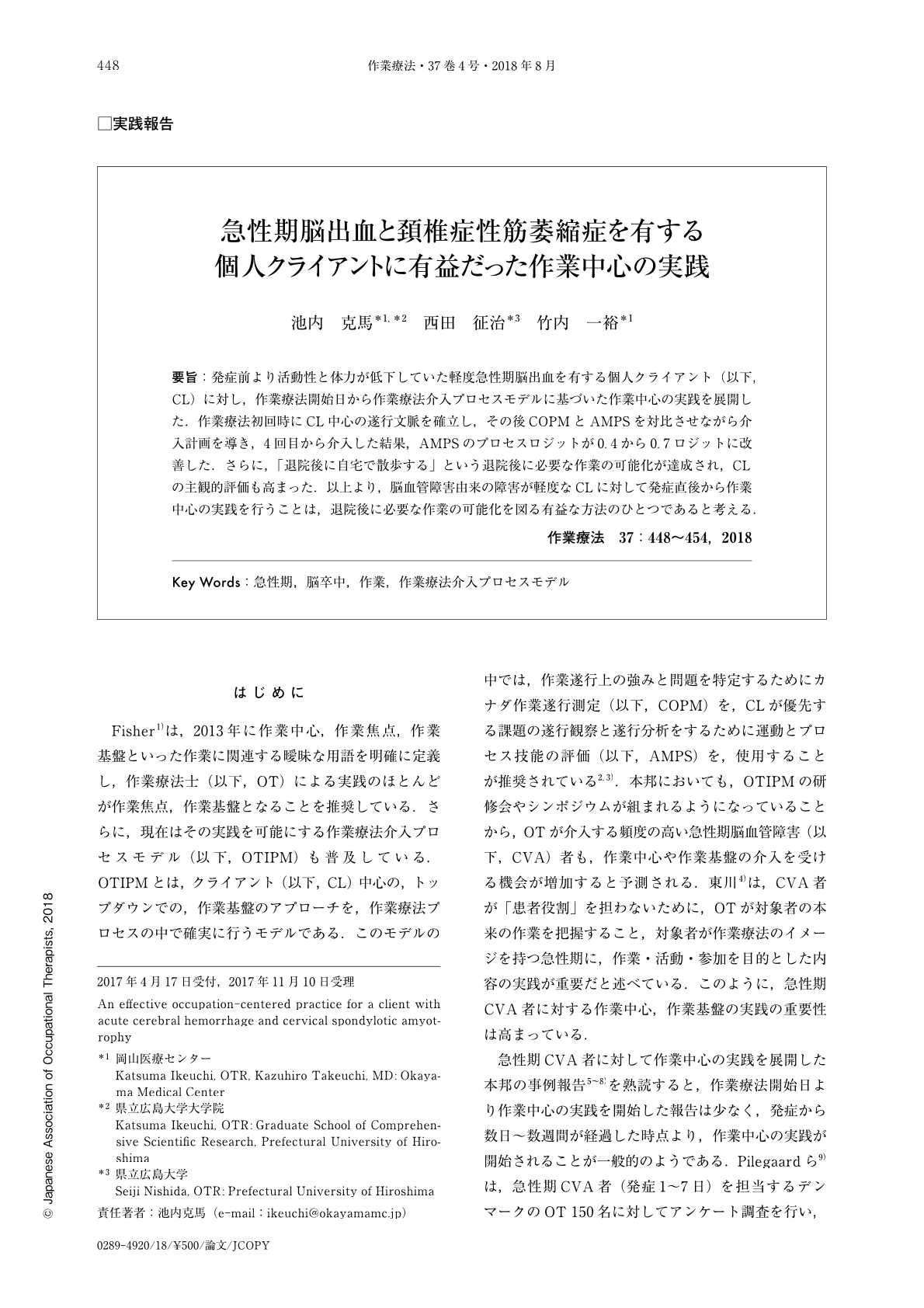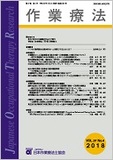Japanese
English
- 販売していません
- Abstract 文献概要
- 1ページ目 Look Inside
- 参考文献 Reference
- サイト内被引用 Cited by
要旨:発症前より活動性と体力が低下していた軽度急性期脳出血を有する個人クライアント(以下,CL)に対し,作業療法開始日から作業療法介入プロセスモデルに基づいた作業中心の実践を展開した.作業療法初回時にCL中心の遂行文脈を確立し,その後COPMとAMPSを対比させながら介入計画を導き,4回目から介入した結果,AMPSのプロセスロジットが0.4から0.7ロジットに改善した.さらに,「退院後に自宅で散歩する」という退院後に必要な作業の可能化が達成され,CLの主観的評価も高まった.以上より,脳血管障害由来の障害が軽度なCLに対して発症直後から作業中心の実践を行うことは,退院後に必要な作業の可能化を図る有益な方法のひとつであると考える.
We experienced an occupation-centered practice which was based on OTIPM for a client with mild acute cerebral hemorrhage. We established a client-centered performance context during the first session, and then made intervention plans which were based on the COPM and AMPS. Restorative occupations were selected and used after the forth session. As a result, process logit on the final AMPS progressed to 0.7 from 0.4, and additionally, the client became able to walk around his home after discharge; his Likert scale improved to 7. Therefore, clients with mild acute stroke may benefit from occupation-centered practices soon after onset.

Copyright © 2018, Japanese Association of Occupational Therapists. All rights reserved.


